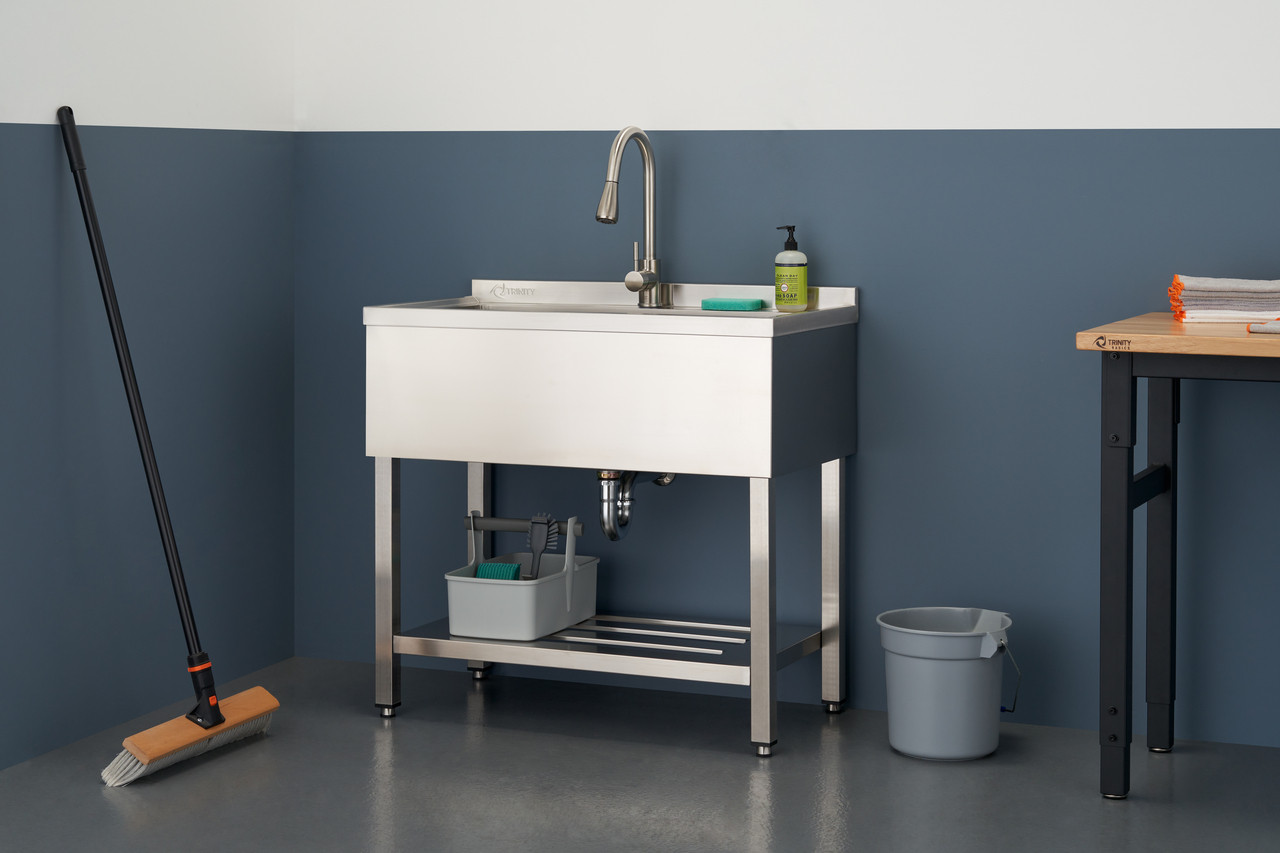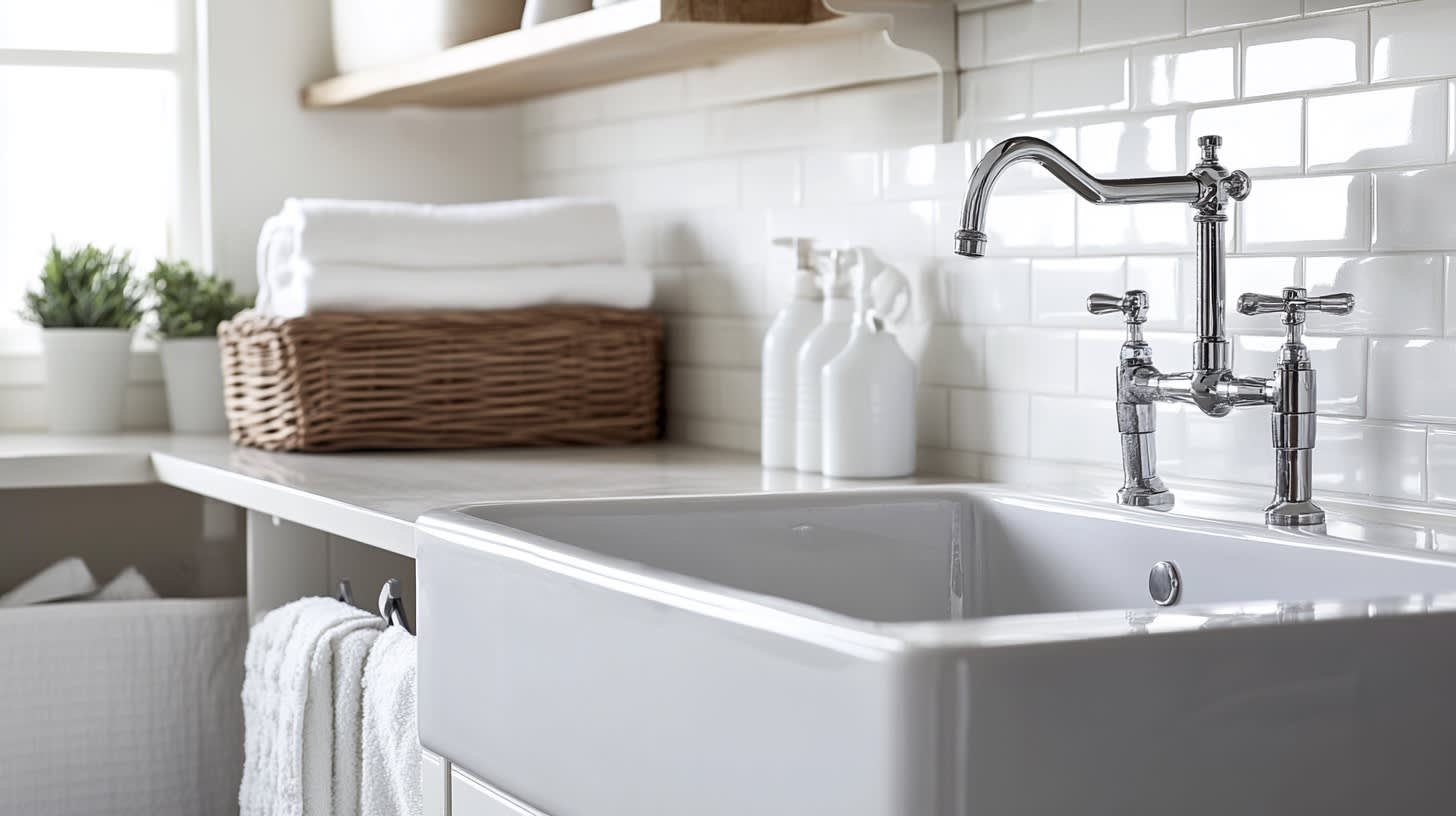Whether you are renovating your laundry area, upgrading your workshop, or simply adding more functionality to your basement or garage, the installation of a utility sink might be just what you need. If that's the case, then you've come to the right place. Let's dive into the wonderful world of utility sinks, exploring all the details for you to understand the beauty, practicality, and multipurpose nature of utility sinks.
Introduction to Utility Sinks
Before we dive into the details, let's consider what a utility sink is and its various applications. A utility sink, also referred to as a laundry sink or service sink, is a large, deep sink used for heavy-duty tasks. Typical placements include laundry rooms, garages, or workshops where tasks such as cleaning large items, hand-washing clothes, rinsing out beach gear, or soaking stained household linens occur.
Various Types of Utility Sinks

Utility sinks come in a variety of types, each with its unique attributes and suitable for different applications:
-
Freestanding utility sink: This type of sink stands alone without needing a countertop. It's perfect for large spaces and heavy-duty tasks.
-
Wall-mounted utility sink: As the name suggests, this sink is affixed to the wall, freeing up floor space. It's great for smaller spaces.
-
Countertop utility sink: This type of sink is mounted into a countertop, often paired with cabinets for added storage.
-
Undermount utility sink: This sink is installed under the countertop, giving a seamless, clean look.
Different Material Options for Utility Sinks
Utility sinks are made from a range of materials:
-
Stainless steel: Known for its strength, durability, and resistant to heat and stain.
-
Acrylic: Lightweight, affordable, and available in various colors and styles, but less durable than stainless steel.
-
Cast iron: Extremely durable and elegant, but also typically more expensive and heavy.
-
Plastic or composite: Affordable and lightweight, but less durable and may not withstand heavy-duty tasks.
Factors to Consider When Purchasing a Utility Sink
Now that you understand the different types and materials of utility sinks, let's look at key factors to consider before making the purchase.
Size of the Sink
The size of your utility sink should be determined by the space you have and the tasks you will be using it for. Remember that a larger sink may be more versatile, but it also takes up more space.
Installation Method
Consider the installation method, whether freestanding, wall-mounted, or integrated. This depends on factors like the size and design of your space and your specific needs.
Material of the Sink
We discussed the different materials utility sinks come in. Your choice should be based on a mix of durability, aesthetics, and budget.
How to Care for Your Utility Sink
Utility sinks, like any other investment for your home, should be maintained and cared for to ensure longevity. Here are some tips on how to care for your utility sink:
-
Clean your sink regularly and ensure it is dried to prevent water spots or mineral deposits.
-
Use soft cleaning agents and avoid using harsh chemicals that might damage the sink’s material.
-
Address blockages in your sink immediately to prevent damage to your plumbing system.
Choosing the right utility sink can make mundane tasks more convenient, keep your home cleaner, and add value to your space. Happy sink shopping!
Frequently Asked Questions about Utility Sinks
Where can a utility sink be installed?
Utility sinks, also known as laundry or service sinks, can be installed in various areas of your home. They are most often found in laundry rooms, basements, garages, and workshops. Some people also have utility sinks installed in their kitchens or outdoors, depending on their specific needs.
What is the purpose of a utility sink?
The utility sink serves a multitude of purposes, especially washing items too large for your typical kitchen sink or those you typically wouldn't want to clean in your kitchen, such as dirty gardening tools or paintbrushes. It’s also useful for washing large pets, soaking laundry, or draining cooled pasta water.
What materials are utility sinks made of?
There's a wide range of materials used for utility sinks. Most common ones are stainless steel, plastic, acrylic, porcelain, and cast iron. Each material varies in its durability, maintenance needs, and appearance, so your choice will depend on your specific needs and preferences.
What's the typical size for a utility sink?
Utility sinks come in a range of sizes, but a standard utility sink typically measures around 24 inches in length, 24 inches in width, and 12 inches in depth. However, since utility sinks are available in various sizes, you have the flexibility to choose one that fits into your available space and meets its intended usage.
How difficult is it to install a utility sink?
The difficulty of installing a utility sink depends on several factors, including your DIY skills, the type of sink, your plumbing setup, and more. While it may be a relatively straightforward process for those comfortable with minor plumbing projects, others might prefer to enlist the services of a professional.
Can utility sinks be movable or portable?
Yes, some utility sinks are designed to be portable. These are typically lightweight, built on casters for easy mobility, and equipped with quick-connect faucet systems. They provide convenience of usage and flexibility, particularly in spaces where a permanent utility sink may not be feasible.
How to maintain and clean a utility sink?
Routine cleaning and maintenance are key to extending the lifespan of a utility sink. This usually involves a regular wipe-down and removal of residue or stains. For tougher stains, products like baking soda and vinegar can be used. The recommended cleaning method can vary depending upon the sink material.
What is the typical cost of a utility sink?
The cost of a utility sink can vary greatly depending on numerous factors like size, material, design, brand, and whether it includes accessories like a faucet. Generally, you can expect to pay anywhere from around $100 to several hundred dollars for a utility sink.
Can utility sinks be custom-made?
Yes, utility sinks can also be custom-made. Customization can include specific dimensions, sink depth, number of basins, material choice, and special features, depending on your specific requirements. Bear in mind that custom-made options typically have a higher cost compared to standard models.
What should I consider before buying a utility sink?
Before buying a utility sink, consider factors such as the space where you plan to install it, its intended use, your preferred material and design, your budget, and any specific features you may need like cabinets for storage or a built-in drainboard.
Pros & Cons of Utility Sinks
Pros
Functional Utility
-
Multiple applications: The first and foremost advantage of a utility sink is its multi-purpose function. It can be used for a range of tasks like washing laundry, handwashing delicates, soaking garden tools, bathing pets, and much more.
-
Extra sink space: A utility sink offers extra sink space that can come in handy, especially when the kitchen or bathroom sinks are occupied.
-
Convenience: With a utility sink in your garage or laundry room, you don't have to worry about dirtying your bathroom or kitchen sinks with stain-prone substances or dirt from outdoors.
Design and Installation
-
Easy installation: Most utility sinks are straightforward to install. Some freestanding models simply require a connection to the existing plumbing system.
-
Variety of styles: Utility sinks are available in different sizes, styles, and materials, making them suitable for different aesthetics and space constraints.
-
Durability: Utility sinks are typically made from robust materials like stainless steel, cast iron, or high-quality plastics, making them highly durable and capable of withstanding heavy use.
Cons
Space Occupancy
-
Space-consuming: Utility sinks can take up a considerable amount of space, especially larger models. Not all homes or apartments have extra room for a sizable utility sink.
-
Limited use of space: While a utility sink provides additional sink space, it can also limit the useable space for other essential items or activities in your laundry room, basement, or garage.
Design and Installation Issues
-
Inconvenience of installation: Despite being touted as easy to install, the actual installation of a utility sink might require the expertise of a plumber, adding to the cost.
-
Limited design choices: While utility sinks do come in a range of styles, the design choices are not as extensive as for kitchen or bathroom sinks. This can make it challenging to find a sink that perfectly matches your interior decor.
Summary
The functionality and convenience of a utility sink cannot be overstated. This simple fixture can drastically improve the functionality of a laundry room, garage, or any space used for messy tasks. It's the perfect solution for those soaked clothes, dirty boots, or simply washing your hands without having to go to a bathroom. The utility sink is your go-to for the ordinary and extraordinary messes life has in store.
Durability and practicality are the main benefits of utility sinks. They are typically made from heavy-duty materials like stainless steel or reinforced plastics, which means they are sturdy enough to withstand heavy use. It's designed for the long haul of washing, cleaning, hosing down, and multiple other uses. The utility sink can take whatever your daily routines throw at it.
Lastly, the aesthetic values of a utility sink should not be overlooked. Modern designs of utility sinks not only serve a practical function but also fit seamlessly into contemporary interiors. This versatile workhorse of a sink can complement the overall design scheme of your utility room. Believe it or not, utility sinks can offer the perfect blend of style and practicality, proving that functionality can indeed look good!
About KYPD Plumbing
Meet KYPD Plumbing, your friendly neighborhood plumbing company in Nicholasville, KY. We're a locally-owned business that's been servicing the local community with top-notch plumbing solutions for years. Our team of certified professionals is passionate about providing reliable plumbing services that exceed your expectations. At KYPD Plumbing, it's not just about fixing pipes, it's about building long lasting relationships with our customers! So next time you have a leaky faucet or a major plumbing project, you know who to call.
Tags: plumbing, home improvement, utility sink,














